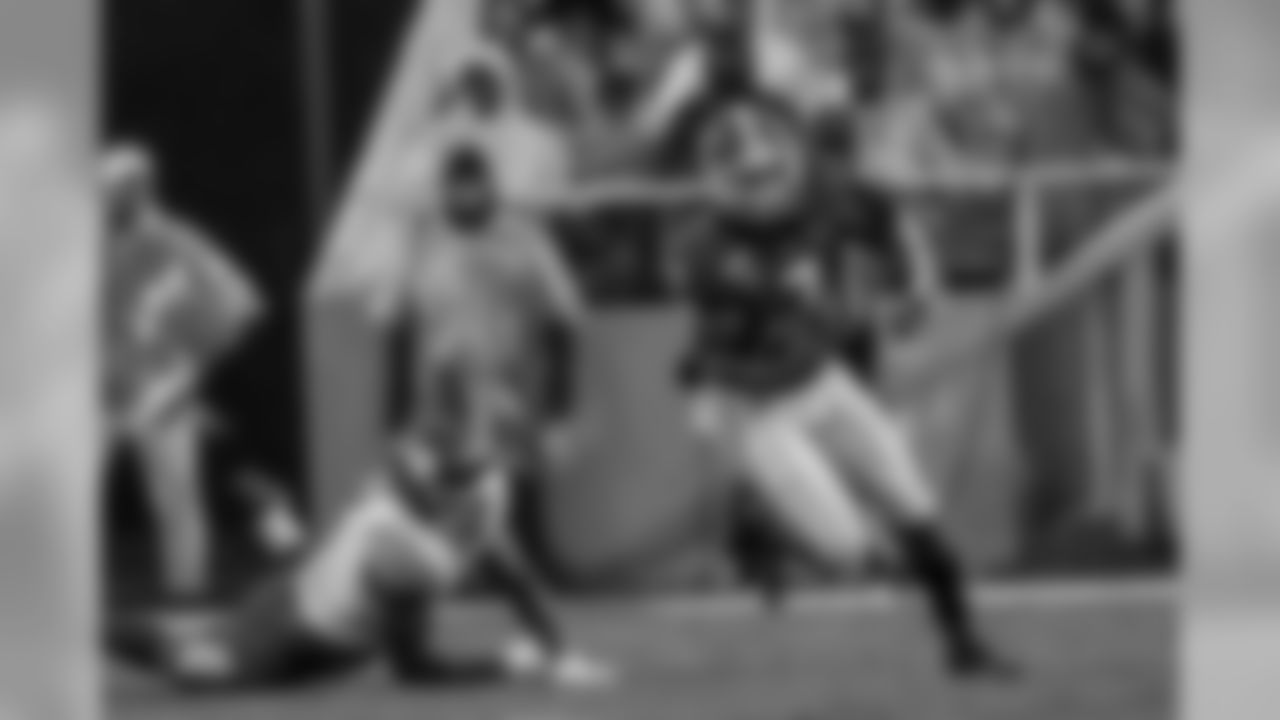The NFL Draft is set to take place, digitally, beginning on April 23, and as things stand now, the Seahawks are scheduled to pick 27th in the first round, and hold seven picks overall. Seahawks.com is taking a position-by-position look at where things currently stand on the Seahawks' roster, as well as the top prospects at each position. We'll also look at Seattle's draft history at each position under general manager John Schneider and head coach Pete Carroll.
So far we've looked at quarterback, cornerback, receiver, and safety and today we turn our attention to running back. Check back tomorrow for a look at where things stand at linebacker.
Seattle's 2020 Draft Picks: Round 1, No. 27 overall; Round 2, No. 59 overall; Round 2, No. 64 overall; Round 3, No. 101 overall; Round 4, No. 133 overall; Round 4, No. 144 overall; Round 6, No. 214 overall.
Draft History Under Carroll & Schneider: Robert Turbin (No. 106 overall, 2012), Christine Michael (No. 62, 2013), Spencer Ware (No. 194, 2013), Kiero Small (No. 227, 2014), C.J. Prosise (No. 90, 2016), Alex Collins (No. 171, 2016), Zac Brooks (No. 247, 2016), Chris Carson (No. 249, 2017), Rashaad Penny (No. 27, 2018), Travis Homer, (No. 204, 2019).
Where the Seahawks Stand
When healthy, Chris Carson and Rashaad Penny represent a very dynamic one-two punch at running back, a duo that should have Seahawks fans excited about the potential for their team's running game. The problem, however, is that neither was able to finish the season healthy, putting in to question just what the Seahawks' depth at running back will look like when training camp begins. Carson, who is coming off of his second straight 1,000-yard season, ended the year on injured reserve with a hip injury, while Penny tore his ACL a couple of weeks before Carson's Week 16 injury. While Carroll and Schneider expressed optimism that Carson will be ready for the start of the season, that doesn't necessarily mean he would be a full-go at the start of camp, and Carroll indicated that Penny could have to open the year on the physically unable to perform list since his injury occurred so late in the season.
Asked at the NFL Scouting Combine if Penny could be ready for the start of the season, Carroll said. "It would be an extraordinary accomplishment if he was ready by the time we got to camp and all that. So we will see what happens. We're not going to set any deadline on it, just see how he develops. But this is the kind of timing that might take in the PUP thing."
The Seahawks liked what they saw in Travis Homer late in his rookie season, but whether it's in the draft or via free agency, the Seahawks almost certainly need to add to that group given the injury status of Carson and Penny.
"We have to make sure that we have enough depth," Carroll said at the combine. "Chris should be absolutely fine. We won't overdo it with him, he's had two great back-to-back seasons. We're going to take care of him throughout all the way to game time when it comes up, so that means we've got some spots available for guys to compete for, so we'll see how that goes."
NFL.com's Top 5 Running Backs
NFL.com's rankings of the top running back prospects in the 2020 draft.

1) D'andre Swift, Georgia

2) Jonathan Taylor, Wisconsin

3) Clyde Edwards-Helaire, LSU

4) J.K. Dobbins, Ohio State

5) Cam Akers, Florida State
1. D'andre Swift, Georgia
Overview (via NFL.com): Swift possesses the play traits and running style of a skillful NFL veteran and is the latest in an avalanche of talented Georgia backs. Tempo and decisiveness are his calling cards, making him a highly talented inside/outside zone runner. He's a cerebral runner who understands block timing and uses quick-cut agility and rare spatial awareness to read and react to defenses beyond the second level. Swift isn't overly explosive as a home-run hitter and doesn't run with the violence of last year's top running back, Josh Jacobs. He can step right in and provide early stability and production as an efficient, every-down back with Offensive Rookie of the Year potential.
2. Jonathan Taylor, Wisconsin
Overview (via NFL.com): Supremely productive, well-built runner with an all-day, every-day mentality that helped lead him to three Big Ten rushing titles. Taylor runs with bend and burst as an outside runner and has home-run speed once he gets into the open field. He displays an ability to weave around interior traffic but might have evolved into more of a thinker than reactor inside due to fumbling issues and the litany of loaded fronts he faced. His patience and understanding of the where/when of blocks allowed him to thrive in multiple run schemes. He's more body puncher than knockout artist, wearing down his opponents with carry after carry. His traits, toughness and talent should make him an early starter with a solid ceiling and more third-down potential than we saw at Wisconsin.
3. Clyde Edwards-Helaire, LSU
Overview (via NFL.com): Compact, sudden back who runs low to the ground with power and balance to break tackles and the agility to bob, weave and shake them in tight quarters. Edwards-Helaire runs with instinctive eyes and quick-cut foot speed. He doesn't really have tells or tendencies and can alter the rush track when needed, which makes him so unpredictable for defenses. While he can create for himself, he's better off working inside-out as NFL linebackers might be able to outflank him on pure outside runs. He has pop behind his pads but lacks short-yardage size. He has the talent to become a good, three-down back in time, but needs to improve in pass protection.
4. J.K. Dobbins, Ohio State
Overview (via NFL.com): Good football player who bounced back from a sub-par 2018. Proved he could shoulder a heavy load and rise to the occasion against the best his schedule had to offer. He can make a sudden tackler miss and fits as a one-cut runner, but his running style is more battle axe than buzzsaw as a lunch-pail runner with the fortitude and toughness to wear down defenses. Dobbins isn't going to be that creative back with the wiggle and juice to create something out of nothing, but he has the efficiency, production and third-down value teams covet. Dobbins could land a shared-carries role quickly and has the potential to become a solid NFL starter.
5. Cam Akers, Florida State
Overview (via NFL.com): Despite a disappointing win-loss record and a lack of blocking up front, Akers maintained a consistent level of play that represents his football character. He runs with tempo and flow but alters his rush track at a moment's notice when needed. He is elusive but lacking the instant burst of a slasher capable of stacking long runs in a single game. Akers has above-average open-field vision once he's into the second level and looks to run through the tackler's pads as a finisher. He's a three-down option with good feel for finding the crease near the goal line, but ball security needs to improve. He can be Leg 1 or 2 of a tandem rushing attack and is one of the more natural runners in the draft.







